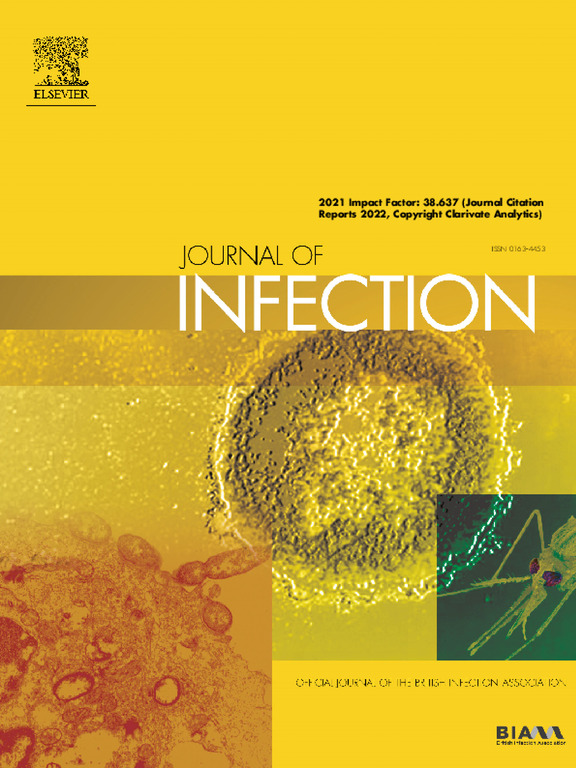利用真实世界数据和目标试验模拟评估应对COVID-19大流行的全球边境管制。
IF 11.9
1区 医学
Q1 INFECTIOUS DISEASES
引用次数: 0
摘要
目的:研究与筛查相比,更严格的边境控制(bc),包括检疫、区域禁令和全面边境关闭,是否与较慢的初始阶段流行病进展有关。方法:利用174个国家和地区2020年1月1日至7月31日的真实疫情数据和COVID-19疫情数据,比较不同严格程度的疫情数据在到达第一个感染高峰的速度较慢的国家的有效性。为了解释由于各国交错采用BC而产生的不朽时间偏差,采用了目标-试验-模拟和克隆-审查-加权方法。采用Kaplan-Meier模型和逆概率滤波权值(IPCW)对每个BC进行有效性估计。由于无法获得数据,各国实施诊断检测的具体时间和方法未包括在IPCW计算模型中。本文研究了采用策略时机作为策略有效性的潜在机制。结果:与采用基本边境筛查的国家相比,采用更严格的边境筛查的国家与达到第一个感染高峰的风险降低无关,包括最严格的全面边境关闭(风险比[HR]: 1.07, 95% CI: 0.88-1.30)。采用这些严格的bc的国家比那些采用可能阐明机制的筛查的国家经历了严重的延误。进一步分析显示,无论严格与否,采用BC的时间与首次感染高峰的风险独立相关。结论:如果推迟采用,更严格的预防措施应对大流行病并不一定会减缓最初阶段的流行病进展。这些发现强调了在采用bc来应对未来新出现的传染病激增时,同时考虑时机和严格性的重要性,而不是只关注严格性。数据可用性:本研究中使用的所有数据都是公开的。本文章由计算机程序翻译,如有差异,请以英文原文为准。
Assessing global border controls in response to COVID-19 pandemic using real-world data and target trial emulation
Objective
To examine whether more stringent border controls (BCs), including quarantine, ban on regions, and total border closure, are associated with slower initial-stage epidemic progression compared to screening.
Methods
Using real-world BCs and COVID-19 epidemic data from 174 countries and regions from 1 January to 31 July 2020, we compared the effectiveness of different stringency BCs in slowing countries from reaching the first infection peak. To account for the immortal time bias due to staggered BC adoptions across countries, the target-trial-emulation and cloning-censoring-weighting approaches were applied. Kaplan-Meier model with inverse probability censoring weights (IPCW) was used to obtain effectiveness estimates for each BC. Country-specific timing and methods of implementing diagnostic testing were not included in the IPCW calculation model due to data unavailability. BC adoption timing was investigated as a potential mechanism for BCs’ effectiveness.
Results
Compared with countries adopting basic border screening, those adopting more stringent BCs were not associated with a reduced risk of reaching the first infection peak, including the most stringent total border closure (Hazard Ratio [HR]: 1.07, 95% CI: 0.88–1.30). Countries adopting those stringent BCs experienced significant delays than those adopting screening potentially elucidating the mechanism. Further analysis revealed that BC adoption timing, regardless of stringency, was independently associated with the risk of the first infection peak attainment.
Conclusions
More stringent BCs in response to pandemics did not necessarily lead to slower initial-stage epidemic progression if adoptions were delayed. These findings highlight the importance of considering both timing and stringency—rather than focusing on stringency alone—when adopting BCs against future emerging infectious disease surges.
求助全文
通过发布文献求助,成功后即可免费获取论文全文。
去求助
来源期刊

Journal of Infection
医学-传染病学
CiteScore
45.90
自引率
3.20%
发文量
475
审稿时长
16 days
期刊介绍:
The Journal of Infection publishes original papers on all aspects of infection - clinical, microbiological and epidemiological. The Journal seeks to bring together knowledge from all specialties involved in infection research and clinical practice, and present the best work in the ever-changing field of infection.
Each issue brings you Editorials that describe current or controversial topics of interest, high quality Reviews to keep you in touch with the latest developments in specific fields of interest, an Epidemiology section reporting studies in the hospital and the general community, and a lively correspondence section.
 求助内容:
求助内容: 应助结果提醒方式:
应助结果提醒方式:


